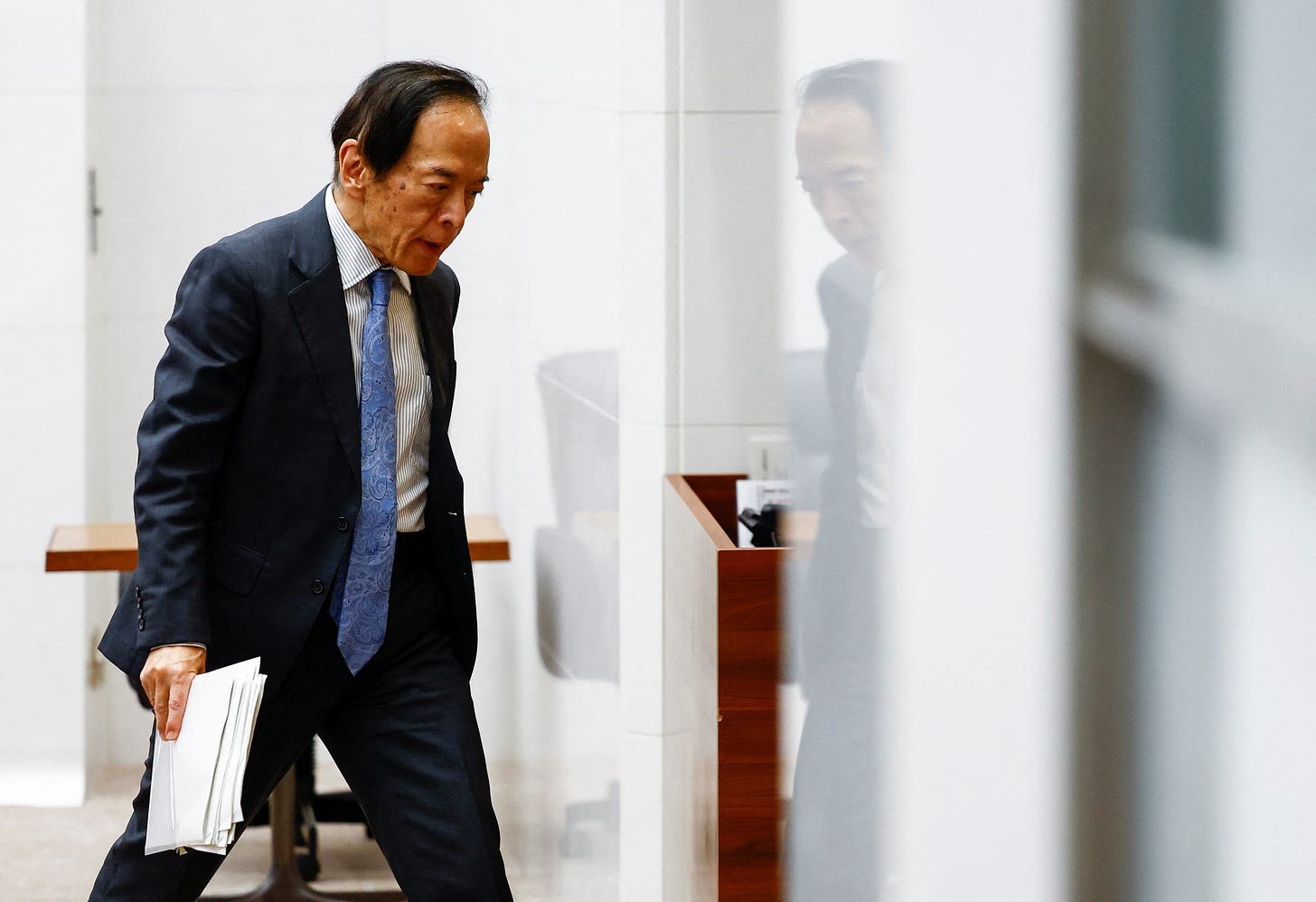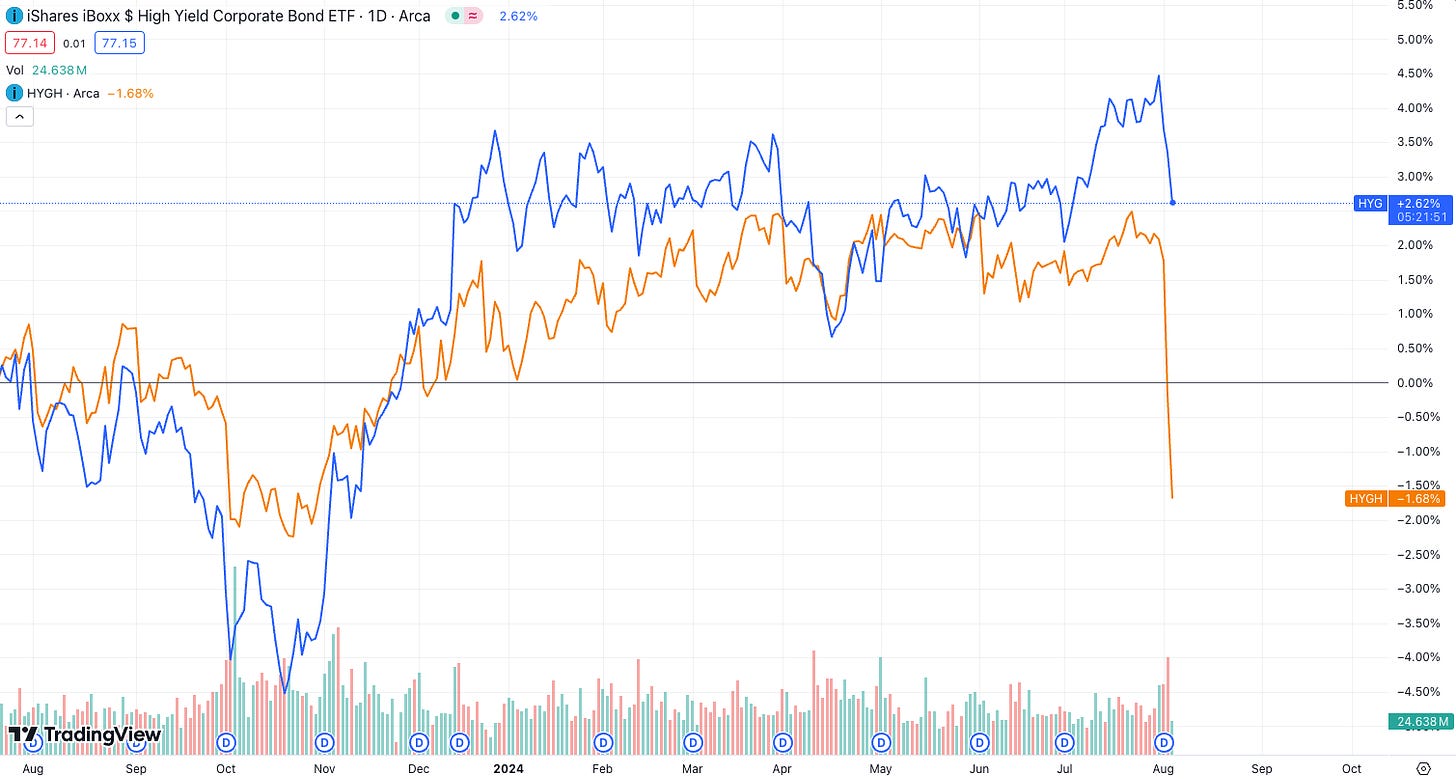As I’m writing this on Monday, August 5th, 2024, the SPY opened down 6%, while BTC is down 15-20% for the day. This is a continuation of the sell-off that began late last week when the BoJ announced a rate hike to 0.25%.
The BoJ implemented its first rate hike in 17 years back in March 2024, raising rates from -0.1% to 0-0.1%. This monumental rate hike came amidst the BoJ’s efforts to downsize its balance sheet, which had ballooned to more than 125% of GDP. While markets were slightly rattled at the prospect of the death of the yen carry trade, the S&P and Bitcoin went on to test all-time highs.
It seems the market is finally taking the BoJ’s efforts to stabilize its plunging exchange rate seriously. The unwinding of the yen carry trade is finally here.
What is the yen carry trade?
The yen carry trade is an investment strategy in which investors borrow money in Japanese yen (JPY), which typically had a negative interest rate for a long time, and then convert it into a different currency to invest in higher-yielding assets. The goal is to profit from the difference between the low borrowing costs in Japan and the higher returns available in other markets, such as equities and high-yield bonds.
This strategy has been successful in an environment of low global interest rates and certainty over the BoJ’s multi-year commitment to a negative interest rate regime. The collapse of the yen’s value, coupled with recent inflationary pressures and signs of organic economic growth, has changed the BoJ’s stance, leading to the recent rate hike decision.
How does it unwind?
With the BoJ’s rate hikes, the JPY increases in value, while the cost of borrowing JPY also increases. This deals a double blow to the yen carry trade, which relies on the spread between the cost of borrowing in yen (which has increased) and the return on investment (which has decreased due to the yen’s strengthening).
As the return on the carry trade decreases, investors start exiting their positions. Those who are heavily leveraged in the carry trade exit aggressively. This leads to a drop in equities, bonds, and other investment vehicles that were part of the carry trade, further reducing the returns. This triggers further cycles of selling as the carry trade becomes increasingly unprofitable, with investors scrambling to cover their positions.
Should I be worried?
Well, yes and no.
In the medium to long term, this is likely to be limited to a technical correction, with the unwinding of leverage concentrated in the yen carry trade and a rebalancing of positions in the market.
In the short term, however, keep an eye on the credit market. Last Friday saw a widening of high-yield credit spreads, which seems to have continued into this week.
Credit market weakness tends to be a bad sign for the broader market, especially given that the main buyers of credit are institutions such as pension funds and, more recently, banks. A spiraling sell-off of bonds may put stress on institutional solvency. With no apparent buyer of last resort in the market now, this threat, while not certain, remains real.
How do we get out of this?
If the unwinding of the yen carry trade continues spiraling out of control, credit and equity markets will feel the pinch.
If it does get serious enough for authorities to intervene, it won’t simply be rate cuts that soften the impact of this unwinding. After all, a rate cut would only reduce the return on the carry trade and ignite further exits.
At this juncture, I see two possible outcomes if the unwinding of the carry trade spirals out of control:
The Fed or BoJ introduces a mechanism that creates a buyer of last resort for credit and equities. This would essentially be QE, styled in the flavor of the recently defunct BTFP.
Ueda reverses his stance on rate hikes and cuts rates back down to 0%.
A rate hike by the Fed seems highly unlikely at this juncture, given the unemployment rate creeping up and exceeding the Fed’s forecast for 2024.
There remains one last possibility: to do nothing and let the trade blow up the markets. This will cause a lot of pain but might just force a market reset and rebalancing of leverage and bad debt in the system.
I doubt they are ever going to take this option. Central bankers have always swooped in to be the last line of credit. They did it in 2008 and 2020. Money will be printed if needed.
How I’m playing this
We’re getting really close, or might already be in the midst of, a great buying opportunity. If we actually experience a credit or liquidity event, or if the Fed swoops in to backstop the selling, it would be financially irresponsible not to go very, very long. Risk assets should perform well in this situation. Think beaten-down tech, growth stocks, and crypto.
On a longer time horizon, we are likely headed for currency debasement. Inflation hedges, such as gold, commodities, property, and perhaps Bitcoin (if it establishes itself as “digital gold”), should do well. I believe we’re headed into a period of commodity outperformance against growth stocks, with inevitable inflation on the horizon.





